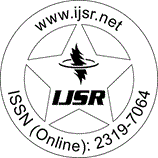Downloads: 117
Albania | Medicine Science | Volume 5 Issue 7, July 2016 | Pages: 1698 - 1702
Recognizing Human DNA versus Non Human DNA
Abstract: Aim. To recognize the human DNA versus non human DNA. Material and methods. GeneMapper softwer uses parts of Allelic ladder and LIZ500 acurately identifies alelles of genotypes and size for each locus of each sample. Allelic ladder parts are divided into 4 special colored pannels. Each pannel had parts of alelles for each locus. Parts of allelic ladder present all possible alelles that humans contain for a particular lucus, where one individual has only one allel or two alelles for a certain locus. Results. Results taken for other samples where the gene hTERT was discovered, we found that this genetic marker is very stable even in cases where DNA was seriously dammaged. This result is supported by the fact that this marker is discovered in other samples. So the low percentages of gained DNA is directly related to DNA dammage and type of substrate used for depositing. The genetic markers have shown consistently higher stability against degradation.
Keywords: DNA, genetic markers, AmpFlSTR Identifiler, vaginal epithelial cells, sperm cells
How to Cite?: Mimoza Canga, Vito Antonio Malagnino, "Recognizing Human DNA versus Non Human DNA", Volume 5 Issue 7, July 2016, International Journal of Science and Research (IJSR), Pages: 1698-1702, https://www.ijsr.net/getabstract.php?paperid=ART2016552, DOI: https://dx.doi.org/10.21275/ART2016552
